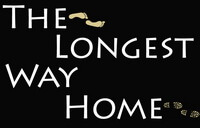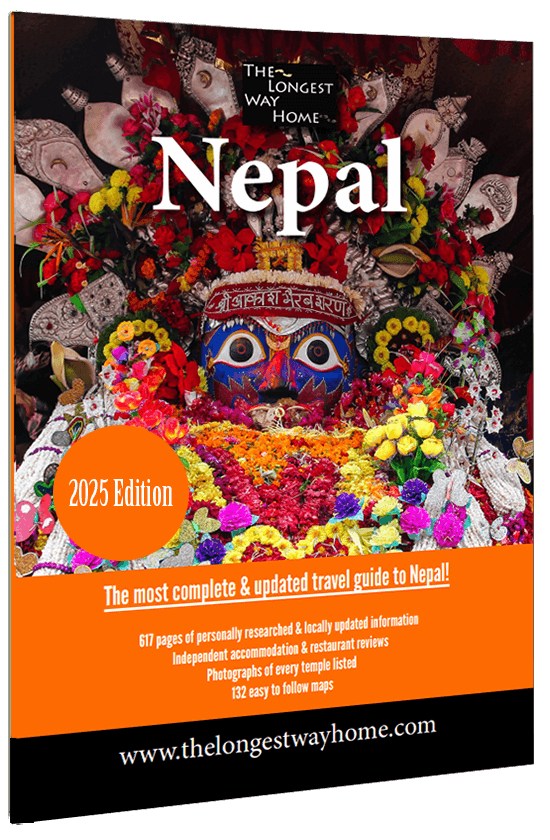List of National Park Entry fees & Conservation Area fees in Nepal
All fees are listed by Park Name - Common Activity - Fee for Nepali, SAARC, Foreigner - total fee for foreigner including VAT. All fees are listed in Nepali Rupees.
| Park Name | Location | Nepali Fee | SAARC Fee | Foreigner Fee | Total Foreigner Fee |
|---|---|---|---|---|---|
| Sagarmatha National Park | Everest Treks | Free | NPR 1,500 | NPR 3,000 (+ NPR 3,000 regional permit/TREK CARD) | NPR 6,000* |
| Annapurna Conservation Area Project (ACAP) | Annapurna Treks, Poon Hill etc | 100 | NPR 1,000 | NPR 3,000 | NPR 3,000 |
| Manaslu Conservation Area Project | Manaslu Treks | NPR 100 | NPR 1,000 | NPR 3,000 | NPR 3,000 |
| Langtang National Park | Langtang Treks | NPR 100 | NPR 1,500 | NPR 3,000 | NPR 3,000 |
| Makalu-Barun National Park | Makalu Treks | NPR 100 | NPR 1,500 | NPR 3,000 | NPR 3,000 |
| Shivapuri-Nagarjun National Park | Hiking | NPR 100 | NPR 600 | NPR 1000 | NPR 1000 + a host of "extras" |
| Chitwan National Park | Jungle/wildlife | NPR 150 | NPR 1000 | NPR 2,000 | NPR 2,000 |
| Bardia National Park | Jungle/wildlife | NPR 100 | NPR 750 | NPR 2,000 | NPR 2,000 |
| Khaptad National Park | Hiking | NPR 100 | NPR 500 | PR 1,500 | NPR 1,500 |
| Rara National Park | Hiking/Trekking | NPR 100 | NPR 1,500 | NPR3,000 | NPR3,000 |
| Shey-Phoksundo National Park | Trekking (Dolpa: note there's a total of 3 permits needed for the entire trek.) | NPR 100 | NPR 1,500 | NPR 3,000 | NPR 3,000 |
| Banke National Park | Wildlife/Jungle | 100 | NPR 750 | NPR 1,500 | NPR 1,500 |
| Koshi Tappu Wildlife Reserve | Wildlife | NPR 100 | NPR 1500 | NPR 1,500 | NPR 1,500 |
| Parsa Wildlife Reserve | Wildlife | NPR 100 | NPR 1500 | NPR 1,500 | NPR 1,500 |
| Shuklaphanta Wildlife Reserve | Wildlife | NPR 100 | NPR 750 | NPR 1,500 | NPR 1,500 |
A note on tax: in 2018 Nepal introduced a federal system throughout the country. As this happened, individual national parks began including VAT in their park fees and advertising flat rates. Others decided to advertise the park fee + VAT as two separate fees. It's become confusing to everyone to say the least. Especially in remoter areas where translations and savvy ticket offices say there's 13% on a ticket price when in the Nepal Tourism Board office there's no 13% VAT. It's hard to know who to believe but a good incentive to buy at the permit office at the Tourism Board. Technically, the VAT is now in the overall price, if not then I've added it with a note along with any other charges. The list above is about as practical and up-to-date as you'll find. It's also realistic when it comes to the "extra" taxes. Shivapuri, however, is a whole other entity which charges extras for everything from not having a guide to bringing a car, etc.
If you find a trekking agency charging 13% VAT on your National Park fee and it's not mentioned on the list above, then you should seriously question them.
Where to buy National Park Permits?
All trekking permit fees can be paid at the Tourist Service Center, Bhrikutimandap, Kathmandu (Tourist Information Office, Exhibition road) or in Pokhara (for the Annapurna Region) or at the park entrance. Opening hours: Sunday-Friday 9am - 5pm (Winter 9am-4pm) - Closed Saturdays & Public Holidays (in recent years the Kathmandu office has opened on Saturday mornings but it's not guaranteed)
Jungle fees are paid at the park entrance.
Children under 10 are free for most parks (passport ID needed).
Most entry fees are "per entry," meaning you can't use them to enter the area more than once. e.g., Chitwan National Park fee is per day as you can't spend the night inside the jungle.
* In 2017, the Solukhumbu region (Everest) added a regional tax on "Foreigners" that amounts to 2,000 rupees (increased to 3,000 in 2024), and that the TIMS was no longer needed in their region. This issue has gone back and forth for several months. As of April 2018, TIMS cards are not being issued for this region, and the Solukhumbu fee is being collected in Lukla. More updates on this new Everest fee can be found here. Basically, TIMS cards are no longer needed for trekking in the Solokhumbu region. Group trekkers need to pay a tax, and solo trekkers need to buy a TREK CARD.
Most trekking park areas are per entry, so in reality, it's a "one-off" fee.
Upper Mustang requires an Annapurna Conservation Area Project plus a Restricted Area Permit (RAP) of USD$500 for 10 days + $50 per day thereafter.
Following the COVID-19 Pandemic, TIMS cards for trekking have not been fully reintroduced. They are no longer required in the Everest Region. Many offices in the Annapurna trekking region are still not open - however, they remain a requirement.
Quick overview of Entry fees in Nepal
Basically, you need two bits of official documentation to go trekking:- You need to pay an entrance fee to the region you are entering
- You need to have a TIMS card
National Park fees are basically the same thing as Conservation Area fees - you only need one unless crossing over to another National park when doing the same trek (this is rare but Manaslu is one). National park entry fees are also needed for jungle areas like Chitwan and Bardia.
The different National Park, Conservation area entry & trekking registration fees
Nepal no longer has "trekking permits" - at least officially. Yet, you'll still hear people and trekking guides saying you'll need to get them!

What people, generally, mean by trekking permits these days are a collection of National Park entry fees and a trekking registration fee. Then, depending on the trek, you may also need a permit (usually needed for restricted areas).
To make matters slightly more bureaucratic, some national parks are called conservation areas.
Firstly, it's easier to deal with the trek you are going on rather than think about the type of "permit" or entry fee you need. Secondly, if you are going with a guide, they'll arrange all this for you.
How long does a National Park Permit take to get?
Usually, it takes 30 minutes but expect up to an hour.
TIMS Card (Trekkers Information Management System)
The second required "permit" you need when trekking is called a Trekkers Information Management System Card or TIMS. This card is meant to help keep you safe or at least help in locating you in the event of an emergency. It also provides guides and porters with insurance.
Basically, you show your TIMS card at various checkpoints along your trek, and your details are taken down. So in the event of an emergency, your approximate location will be known.
The service is run by TAAN (Trekking Agencies' Association of Nepal) who are meant to be an independent umbrella organization of all trekking agencies.
In 2023 TAAN changed the system along with Nepal Tourisim Board and banned independent trekking. Therefore making mandatory trekking guides the new legal requirements. However, TAAN has failed to establish many checkpoints yet.
TAAN themselves have come under a lot of criticism over the years. Nevertheless, there is an agreement between TAAN and Nepal Tourism Board that makes TIMS cards mandatory for all trekkers.
There are two types of TIMS cards. One for trekkers with a group (guide) and one for solo or independent trekkers going alone.
- A group TIMS card costs USD$10
- A solo or Free Independent Trekker TIMS card costs USD$20
TIMS cards are available in Kathmandu (Nepal Tourism Office) and in Pokhara. Opening hours: Sunday-Friday 9am - 5pm (Winter 9am-4pm) - Closed Saturdays & Public Holidays (in recent years, the Kathmandu office has opened on Saturday mornings, but it's not guaranteed).
To obtain a TIMS Card, you need a copy of:
- Your passport
- Two Passport-sized Photographs
How long does a TIMS Card take to get?
Usually it takes 30 minutes but expect up to an hour.
Do you need a TIMS Card for Everest Treks?
No TIMS cards are required anywhere within the Solukhumbu regions of Nepal, which includes all Everest treks. There is a separate local "tax" that trekkers must pay when entering the region. This was set up by the local Solukhumbu administration who felt the TIMS card fees were not being distributed correctly, so they removed the fee and introduced their own. Funds raised by this new tax are meant to be used to improve the region for trekkers.
For more information see http://www.timsnepal.com/
Again, a TIMS is not needed for the Everest Region.
Some final things to keep in mind
While National Park fees and TIMS cards are mandatory there are some other things that should be too.
If you are going trekking in Nepal then make sure you have travel insurance that covers you. Here's my recommendation for travel insurance that covers you for trekking in Nepal!
Get the Best Nepal Guidebook
Without question you can use this website to plan out your trip to Nepal for free. The above map is just one of over 100 from my Nepal guidebook. There's is however a big difference in using a website and having a dedicated guidebook.
When I first came to Nepal 10+ years ago I was very disappointed with the big brand guidebooks on offer. So, I set about writing my own. It's is far better! Check out the details below and you'll see why, I promise.
Was this page helpful to you? If so please tell others!











